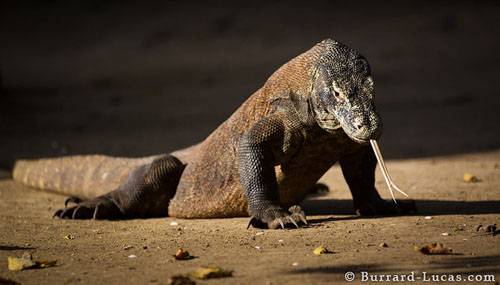Reptiles are cold-blooded creatures that often leave people backing off in fear - at least in the case snakes, lizards, crocodiles etc. However many reptilian species make excellent photographic subjects provided the photographer understands the species involved and knows what he or she is doing. Crocodiles, many snakes, some lizards and numerous other reptiles can prove dangerous or even lethal for the unwary, so proper understanding of the risks is particularly important. Where the photographer does not have sufficient knowledge of the species concerned, it may be wise to undertake the work in the company of an experienced wildlife expert or guide.
| Image by kind permission of Burrard-Lucas.com |
The hazards of making close approaches to snakes, crocodiles etc cannot be overstated. It is vital to know the precise species involved, to understand its habitat and behaviour, and to realize that some reptiles can move with lightening speed at least over short distances. Get bitten by a highly venomous snake in the African bush and you may be a long way from expert medical attention. In some cases it might be the last thing you do! Be careful!
One obvious approach is to use a long telephoto lens and keep as much distance as possible between the reptile and the photographer. Another technique used for smaller reptiles is to cool the specimen in a refrigerator to lower the body temperature and render the creature more placid and docile. Expert advice is also required in such cases, not least to avoid any suffering for the subject. A third approach, which some people may regard as "cheating", it to take a captive animal into the wild to be photographed in natural surroundings. Expert assistance may also be required here.
Some reptiles can of course be photographed in zoos, wildlife parks or in a domestic environment. Close-up work may produce interesting images but wider-angle images always lack evidence of the natural habitat. In the case of zoos, reptiles are likely to be viewed through glass. In such cases, great care must be taken to keep the camera close to the window to avoid reflections.







